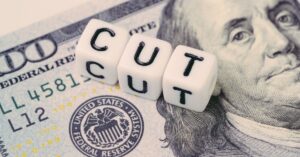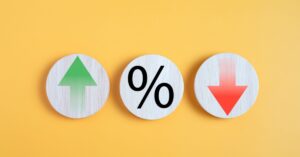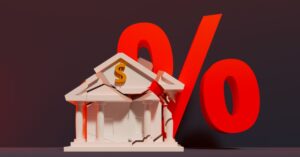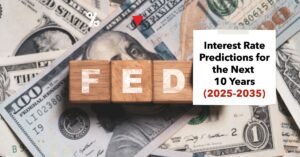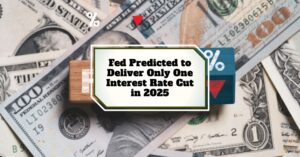On June 18, 2025, the weight of the inflation rate is the single most significant factor shaping the Federal Reserve's (the Fed's) monetary policy. The Federal Reserve's current federal funds rate of 4.5% reflects the serious challenge of maintaining price stability in the face of potentially persistent inflation, which is impacting not just consumer spending but the health of the overall economy.
From my experience and expertise in watching the markets for over a decade, I can tell you that this is a critical moment for the US economy and, indeed, the global economy. The Fed's decisions that day – and those that follow – will influence everything from mortgage rates to your grocery bill. The outcome of their meeting will impact not just investors but also every single American that consumes goods and services.
This is not just a matter of economics, but also of psychology. People lose trust in a system when it feels like their money is worth less tomorrow than it is today. And, unfortunately, that erosion of trust can lead to uncertainty and even economic downturns.
Given the current state of affairs, let's dig deep into the topic.
Inflation is the Biggest Concern Influencing the Fed's Decision Today on June 18, 2025
The Tightrope Walk: The Fed's Position
The Federal Reserve, as you probably know, is the central bank of the United States. One of its main jobs is to manage inflation, which effectively means keeping it under control, so we are not caught in the vicious cycle where prices rise faster than wages.
Think of the Fed as an orchestra conductor: they have a few key instruments at their disposal, such as interest rates, to orchestrate the symphony of the American economy. Right now, that symphony is battling the discordant notes of stubborn inflation. When inflation is high, the Fed's goal is to cool down the economy. They do this primarily by raising interest rates, making it more expensive for businesses and individuals to borrow money.
- Raise Interest Rates: It becomes more expensive to borrow money
- Reduce Spending: Businesses and consumers spend less
- Cool Inflation: Inflation slows down.
But there's a tightrope to walk. Raising rates too quickly can slow down economic activity too much, perhaps even tipping the economy into a recession. Lowering rates can help spur economic activity, but if inflation is already running hot, that can make the problem worse. As I see it, and judging by the Fed's recent communications, they are very aware of this trade-off.
Looking at the Data: A Quick Dive
Before we talk about the Fed's decision, let us run our eyes through some of the figures to see how things stand. We can use some information about the last few months to understand the trends.
| Month | Inflation Rate (CPI) | Core CPI | Federal Funds Rate (%) |
|---|---|---|---|
| January | 5.4% | 2.6% | 4.5 |
| February | 5.2% | 2.6% | 4.5 |
| March | 5.0% | 2.7% | 4.5 |
| April | 4.9% | 2.7% | 4.5 |
| May | 4.8% | 2.8% | 4.5 |
| June | 4.6% | 2.8% | 4.5 |
- Inflation Rate: The Consumer Price Index (CPI), which measures the average change over time in the prices paid by urban consumers for a basket of consumer goods and services, has seen a slight decrease, falling from 5.4% in January to 4.6% in June.
- Core CPI: The figures for Core CPI from January to May have been very impressive with a gradual decline, and it now stands at 2.8%.
- Federal Funds Rate: The Federal Reserve has held the federal funds rate steady at 4.5% for the period.
While the general trend indicates a gradual decrease in inflation, it is worth noting that many economists worry about “sticky” inflation, which may not come down as quickly as hoped.
The Fed's Toolbox: What Options Are Available?
Now, let's look at the range of options available to the Fed. They're not limited to just raising or lowering interest rates; they have various tools available:
- Interest Rate Adjustment: The main tool. Raising rates to cool the economy, or lowering rates to stimulate it.
- Quantitative Tightening (QT): Reducing the amount of bonds or securities that they hold, thus taking money out of the system.
- Forward Guidance: This involves communicating to the markets what the Fed intends to do, influencing expectations.
Given the inflation data, and, importantly, the Fed's dual mandate from Congress – to promote maximum employment and stable prices – I believe its primary focus will be to maintain its current stance. The decision to hold steady might well be their most significant one. They are very unlikely to lower rates at this stage.
Market Reactions and Consumer Behavior
The Fed's decisions trigger a domino effect across the economy. Financial markets react immediately. Stocks, bonds, and currencies all become subject to speculation. For some, the news might be good, opening up an opportunity to invest in particular industries; for others, it may create uncertainty, causing them to hold back.
The average consumer feels this too. If interest rates remain high, we all may:
- Delay Major Purchases: Like buying a house or a car.
- Focus on Saving: Making sure there is enough money put away as a precaution.
- Be Cautious with Credit: This makes borrowing more expensive.
So, it's not just about abstract economic indicators; it's about how we all live and make financial decisions.
Looking Ahead: Trends on the Horizon
Predicting economic trends is always a tricky business. And anyone trying to tell you they know exactly what's in stock is probably not being honest. However, we can analyze the information available. Several data points are crucial to follow:
- Wage Growth: This will be a significant factor. If wages are rising too quickly, it can fuel inflation.
- Commodity Prices: The cost of raw materials, like oil and metals, will continue to influence production costs, which impacts prices.
- Geopolitics: Global events, like conflicts and trade disputes, can still introduce uncertainty and influence prices.
Keeping an eye on these factors will give us a better idea of what to expect in the next few months.
Final Thoughts: Navigating the Road Ahead
For the Federal Reserve, June 18, 2025, is a crossroads of multiple challenges, complexities and possible opportunities. Their decisions that day reflect not only the economic realities of the moment, but the challenges of trying to make the best decisions for the American people.
As I see it, the importance of understanding inflation cannot be overstated. Economic education is very important if we are to empower ourselves to make better financial decisions. By understanding what's happening, we become more resilient to the ups and downs of the economy. After all, the economy affects all of us.
Position Your Portfolio Ahead of the Fed’s Next Move
The Federal Reserve’s next rate decision could shape real estate returns through the rest of 2025. Whether or not a rate cut happens tomorrow, smart investors are acting now.
Norada Real Estate helps you secure cash-flowing properties in stable markets—shielding your investments from volatility and interest rate swings.
HOT NEW LISTINGS JUST ADDED!
Talk to a Norada investment counselor today (No Obligation):
(800) 611-3060
Recommended Read:
- What are the Odds of a Fed Rate Cut Today, June 18, 2025?
- Interest Rate Predictions for the Next 3 Years: 2025, 2026, 2027
- When is Fed's Next Meeting on Interest Rate Decision in 2025?
- Interest Rate Predictions for the Next 10 Years: 2025-2035
- Will the Bond Market Panic Keep Interest Rates High in 2025?
- Interest Rate Predictions for 2025 by JP Morgan Strategists
- Interest Rate Predictions for Next 2 Years: Expert Forecast
- Fed Holds Interest Rates But Lowers Economic Forecast for 2025
- Fed Indicates No Rush to Cut Interest Rates as Policy Shifts Loom in 2025
- Fed Funds Rate Forecast 2025-2026: What to Expect?
- Interest Rate Predictions for 2025 and 2026 by NAR Chief
- Market Reactions: How Investors Should Prepare for Interest Rate Cut
- Impact of Interest Rate Cut on Mortgages, Car Loans, and Your Wallet

